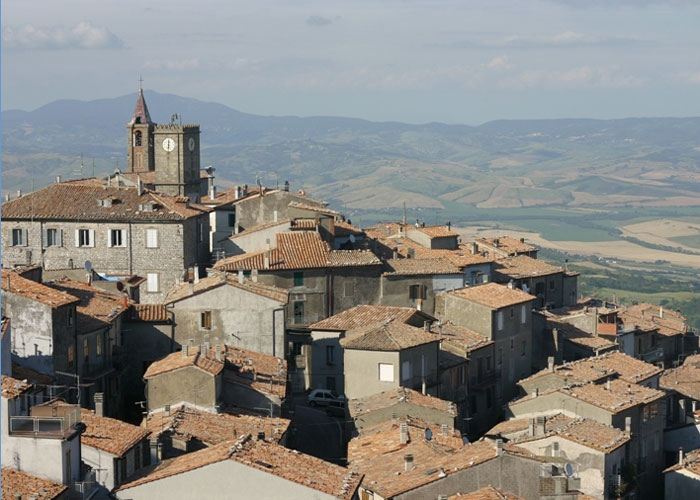|
“Like an eagle’s nest, Castell’Azzara hung on the precipices of Monte Civitella”, |
||||
| Placed at the foot of Monte Civitella (which can be easily climbed starting from the Cave and by following the Anello paths) Castell’Azzara dominates the Paglia valley (in the distance the Apennines can be seen) and is the highest (about 800 m altitude) of the entire Amiata district. The ancient village is situated in the northern part of the Area dell’Tufo (Tuff Area) and is one of the most fascinating and interesting locations the Maremma. The ancient Castellum Lazzeri, according to the testament deeds of the Aldobrandeschi in 1216, derives its name from the "zara" game, meaning a game of dice which the three Aldobrandeschi descendents used to decide over their property.[1] The stone boundary wall can still be singled out, even though by now it has been incorporated by homes: there is still a stone arch gate south-east, followed by a vault passage which is bored by a well in the center and to the west, a rectangular tower with crenellation (the coat of arms shows three towers). The church of San Nicola holds a seventeenth century painting of the Sienese school, depicting the Virgin, Mary with saints Martino and Nicolò, while the small church of the oratory holds a canvas depicting the Madonna del Rosario and saints Domenico and Caterina da Siena, also of the seventeenth century Sienese school. The Chiesa della Madonna del Rosario is decorated with splendid frescoes. |
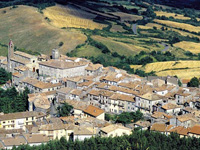 |
|||
 |
||||
Castle Rocca Silvana near Selvena, Castell’Azzara, Monte Amiata Area [3]
|
||||
Main sights are the Rocca aldobrandesca, the Chiesa di San Nicola, the Chiesa della Madonna del Rosario, the Villa Sforzesca, the Chiesa di San Gregorio Magno.
|
||||
La Chiesa di San Gregorio Magno alla Villa Sforzesca [1]
|
||||
The Chiesa di San Gregorio Magno (Church of St. Gregorio Magno) is a beautiful religious structure which rises just outside the town. Originally its function was as a place of prayer and the residence of the Sforza Counts. The church of San Gregorio Magno presumably dates from the same period as the villa, that is the second half of the XVI century. It has a plain façade with an architraved portal. The interior is a rectangle and houses a painting of Cardinal Sforza Kneeling Before the Virgin and Child and a fresco portraying Saint Augustine Abbot.
|
||||
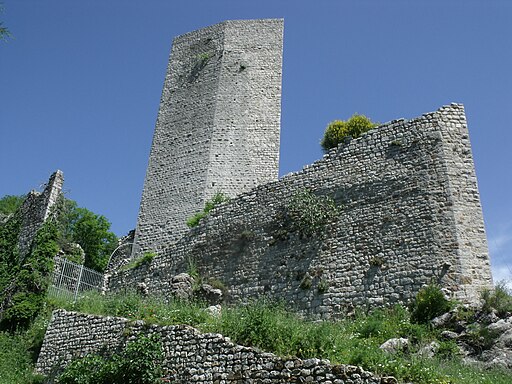 |
 |
 |
||
| Viuw of the Castle Rocca Silvana [3] | Castle Rocca Silvana near Selvena [3] | Castle Rocca Silvana near Selvena [3] | ||
|
|
||||
|
||||
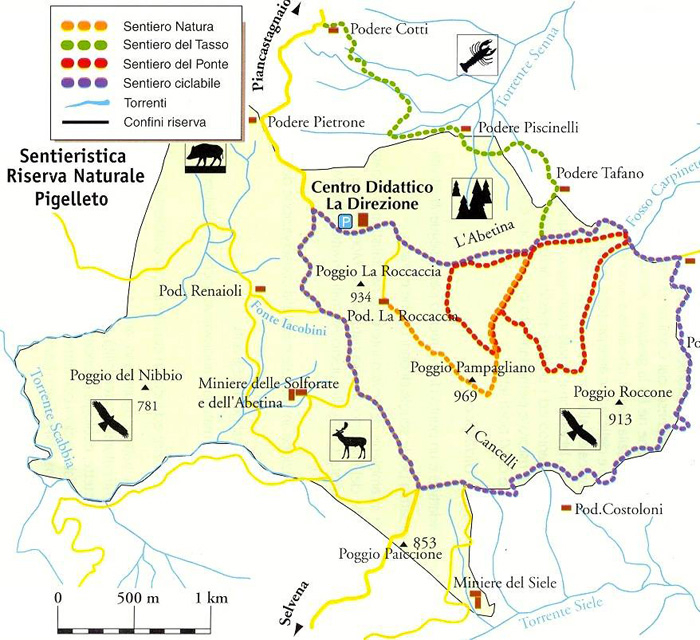 |
||||
Map Miniera del Siele - Castell'Azzara |
||||
| Pigelleto Reserve, situated in the south of Piancastagnaio, protects an heterogeneous woodland area rich in vegetal species, among which the presence of the Silver Fir as spontaneous species is particularly important. The history of Pigellato wood, like that of the surrounding territory, has been deeply marked, at least in the last two centuries, by the presence of cinnabar layers. The Pigelleto Nature Reserve extends over a territory of 862 hectars between Siena and Grosseto. It is located in Piancastagnaio, a small town South-East from Monte Amiata in Tuscany. The Pigelleto Natural Reserve has been incorporated by the Regional Administration of Tuscany (Regione Toscana) in 1996. It used to host one of the most important quicksilver mines of Monte Amiata, today completely abandoned. The Environmental Education Centre La Direzione is inside the Reserve itself and includes the Visitors Centre, the Environmental Education Labs and facilities for visitors who wish to spend some time in peace and tranquillity. The Siele mine is inside the Pigelleto natural reserve (“pigello” is the name the people of Amiata give to the white fir, a majestic tree that can reach heights of 50 m). Mining on Monte Amiata dates back to ancient times: the Etruscans used cinnabar (the mineral that mercury is extracted from) to paint earthenware and frescoes in tombs, digging up to 40 m into the earth to extract it. The largest deposits are located in Santa Fiora, Castell’Azzara, Abbadia San Salvatore and Piancastagnaio. In modern times, the Siele mine started to be used for industrial ends towards the middle of the 1800s. Siele was a complex site comprising both mines (galleries and shafts) and plants for working the mineral. In the early 1900s, a village grew up around the site, with houses, schools and a church. After a period of great expansion, also due to orders from the war industry, mining activity ceased in 1973: it was the third largest mine in the world after Almadén (in Spain) and Abbadia San Salvatore. |
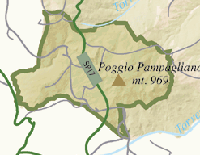 |
|||
| Walking in the Riserva Naturale del Pigoletto | Between Saragiolo, Miniera del Siele, Castell'Azzara, Podere La Roccaccia and Castell'Azzara |
||||
| Seragiolo-Miniera del Siele-Castell'Azzara (n° 16 ) Continuing along the pathway n. 15, the road climbs a little till the crossroads to the Podere Praticce, and then it descends towards the Senna Torrnt and climbs again, around the Poggio La Roccaccia, till the homonymous farm house (not far from the farm house the pathway reaches the crossroads with the pathway number 17, known as â??Roccacciaâ??). Once got the Poggio Pamalliano over the pathway reaches the Cancelli crossroads and then the old mine. The whole pathway, till the Siele mine, about 8 km long and of average difficulty, at an altitude of about 1000mt, can be covered in little more than 2 hours. Pod. La Roccaccia - Castell'Azzara (n° 17) |
||||
From Selvena to Castell'Azzara 7 km La traversata del massiccio del Monte Penna e del Monte Civitella inizia con una ripida salita e prosegue toccando il Poggio della Vecchia e la sorgente delle Fossatelle. Segnavia n. 19. |
||||
| From Castell'Azzara to Montebuono and to Sovana 17 km Un lungo percorso su strade sterrate conduce dal Monte Civitella, propaggine sud-orientale dell'Amiata, alle valli del Fologna e del Fiora. Dopo aver costeggiato la rupe di Monte Vitozzo si traversa la provinciale Selvena-Sorano e si raggiunge Montebuono. Alla fine, prima di salire a Sovana, si scende al Fosso Picciolana e si toccano le tombe Ildebranda e Pola. Segnavia n. 3. |
||||
|
||||
| I T
|
The Pigelleto Sanctuary and Monte Penna - 22 km |
Address Mount Penna Nature Reserve: Castell’Azzara (GR)
Castell'Azzara borders Piancastagnaio (SI), Proceno (VT), Santa Fiora, Semproniano and Sorano. |
Enlarge map |
|

